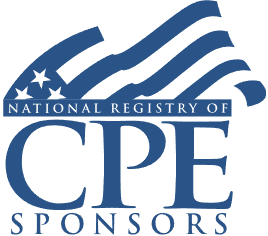Audit Sampling Strategies for Nonprofits: Uniform Guidance Compliance, Reporting and Communicating Findings

Course Details
- smart_display Format
On-Demand
- signal_cellular_alt Difficulty Level
Intermediate
- work Practice Area
Accounting
- event Date
Wednesday, March 4, 2020
- schedule Time
1:00 p.m. ET./10:00 a.m. PT
- timer Program Length
110 minutes
-
BARBRI is a NASBA CPE sponsor and this 110-minute webinar is accredited for 2.0 CPE credits.
This course will explain sampling procedures for audits conducted under the uniform guidance. Our panel will review the necessary sampling concepts and steps when performing single audits.
Faculty

Ms. MacLeod is an audit shareholder specializing in serving the firm’s not-for-profit clients with a focus on foundations, international NGO, and education organizations. She provides a variety of attest and consulting services including financial statement audit; auditing complex investment portfolios; Single Audit; process, policy and controls consulting; and field office site visits for international clients.

Mr. Purvis focuses on serving clients in the healthcare industry and the not-for-profit sector. He also performs compliance audits for various organizations. His technical skills and exceptional attention to detail provide a valuable resource for clients with whom he works. Mr. Purvis enjoys the challenge of working through complex accounting issues and being a source of technical knowledge to those he works with.
Description
While practitioners must understand the differences between statistical--or the more frequently used, nonstatistical (judgment-based)--samples, both methods require judgment. Auditors must perform both tests of controls and compliance to determine the effectiveness of systems NPOs have in place and their level of compliance with these systems.
There are multiple steps within the framework of pulling samples and testing the selections. Determining the sample size and levels of risk, defining the population, evaluating the results, and communicating the findings are all sampling challenges faced by auditors. Professionals handling audits of programs need to fully understand the specific sampling requirements for single audits.
Listen as our panel of veterans shares their experiences in developing and implementing sampling strategies, and explains how best to handle exceptions and report findings when performing single audit engagements. Our panel will share their experiences and offer best practice suggestions for performing sampling in a single audit environment. They will provide hands-on examples and explain how an auditor's decisions and judgments impact the audit of an NPO.
Outline
- Requirements under uniform guidance
- Determining the size of tests of controls
- Tests of compliance (substantive tests)
- Projection of compliance test results
- Reporting deficiencies and issuing a compliance opinion
- Requirements for financial statement reporting
Benefits
The panel will review these and other key issues:
- Determining sample size under uniform guidance
- How samples can be designed to meet more than one purpose (dual-purpose testing)
- Considerations when documenting audit sampling tests of controls over compliance and substantive tests of compliance
- Suggestions on efficient compliance with the requirements
- Defining the population and the sampling unit
- Areas of common deficiencies as cited in inspections and peer reviews
NASBA Details
Learning Objectives
After completing this course, you will be able to:
- Identify when dual-purpose sampling is beneficial
- Determine how to report findings
- Decide between statistical and nonstatistical sampling
- Ascertain when to increase the sample size
- Field of Study: Auditing
- Level of Knowledge: Intermediate
- Advance Preparation: None
- Teaching Method: Seminar/Lecture
- Delivery Method: Group-Internet (via computer)
- Attendance Monitoring Method: Attendance is monitored electronically via a participant's PIN and through a series of attendance verification prompts displayed throughout the program
- Prerequisite: Three years+ business or public firm experience at mid-level within the organization, preparing complex tax forms and schedules; supervisory authority over other preparers/accountants. Specific knowledge and understanding of cost allocation principles; familiarity with government standards for nonprofit organizations receiving federal grant monies

Strafford Publications, Inc. is registered with the National Association of State Boards of Accountancy (NASBA) as a sponsor of continuing professional education on the National Registry of CPE Sponsors. State boards of Accountancy have final authority on the acceptance of individual courses for CPE Credits. Complaints regarding registered sponsons may be submitted to NASBA through its website: www.nasbaregistry.org.
Unlimited access to premium CLE courses:
- Annual access
- Available live and on-demand
- Best for attorneys and legal professionals
Unlimited access to premium CPE courses.:
- Annual access
- Available live and on-demand
- Best for CPAs and tax professionals
Unlimited access to premium CLE, CPE, Professional Skills and Practice-Ready courses.:
- Annual access
- Available live and on-demand
- Best for legal, accounting, and tax professionals
Unlimited access to Professional Skills and Practice-Ready courses:
- Annual access
- Available on-demand
- Best for new attorneys
Related Courses

New AICPA Quality Management Standards: Implementing a Compliant and Effective Quality Management System
Tuesday, July 15, 2025
1:00 p.m. ET./10:00 a.m. PT

Special Fundraising Events: Reporting and Disclosure Requirements, Unrelated Business Income, Gaming Activities
Monday, June 16, 2025
1:00 p.m. ET./10:00 a.m. PT
Recommended Resources
Gain a Competitive Edge Through Efficient CPE Strategies
- Learning & Development
- Business & Professional Skills
- Career Advancement